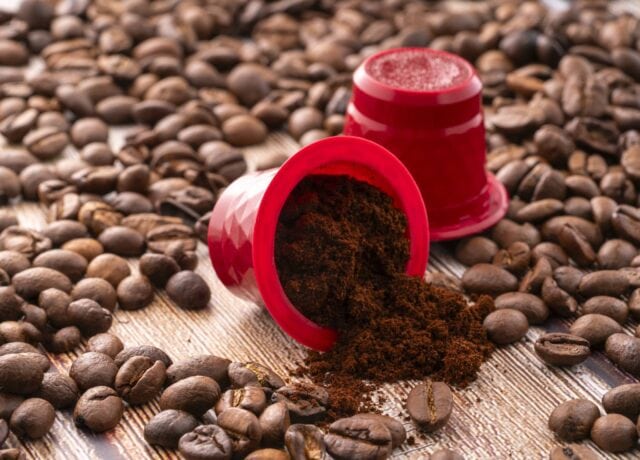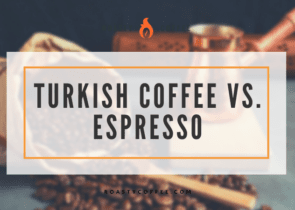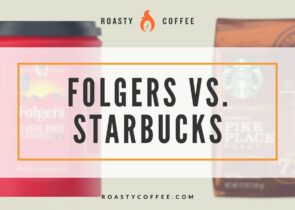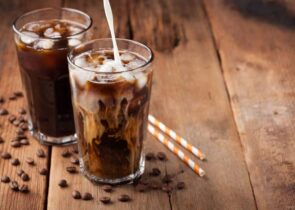A Keurig is a great way to make a great dark roast coffee, but sometimes you might want a milky drink, right? A steaming cup of hot chocolate or a perfect latte can be quite delightful. Many people don’t want to wait for the cold milk to boil to make their hot beverage, and sometimes, even sticking the milk in the microwave feels like too much effort.
So, when you are craving a milky coffee, you might be tempted to simply put milk in a Keurig water tank instead of fresh water. After all, it’s a coffee maker – and what kind of coffee doesn’t go well with milk? However, we’re here to tell you that milk and Keurigs don’t mix.
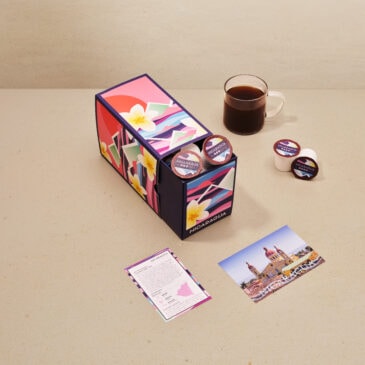
"The best coffee pod I've ever tasted"
Yes, we mean that. Finally, specialty coffee for your KCup machine, roasted fresh to your order by our friends at Atlas Coffee in Austin, TX! Get 50% OFF to try it with code ROASTYPODS
So, let’s talk about why it’s not a good idea to put hot milk in a Keurig water reservoir and what happens if you do. We’ll also share some alternative ways to make a wide variety of delicious milk-based drinks with your Keurig!
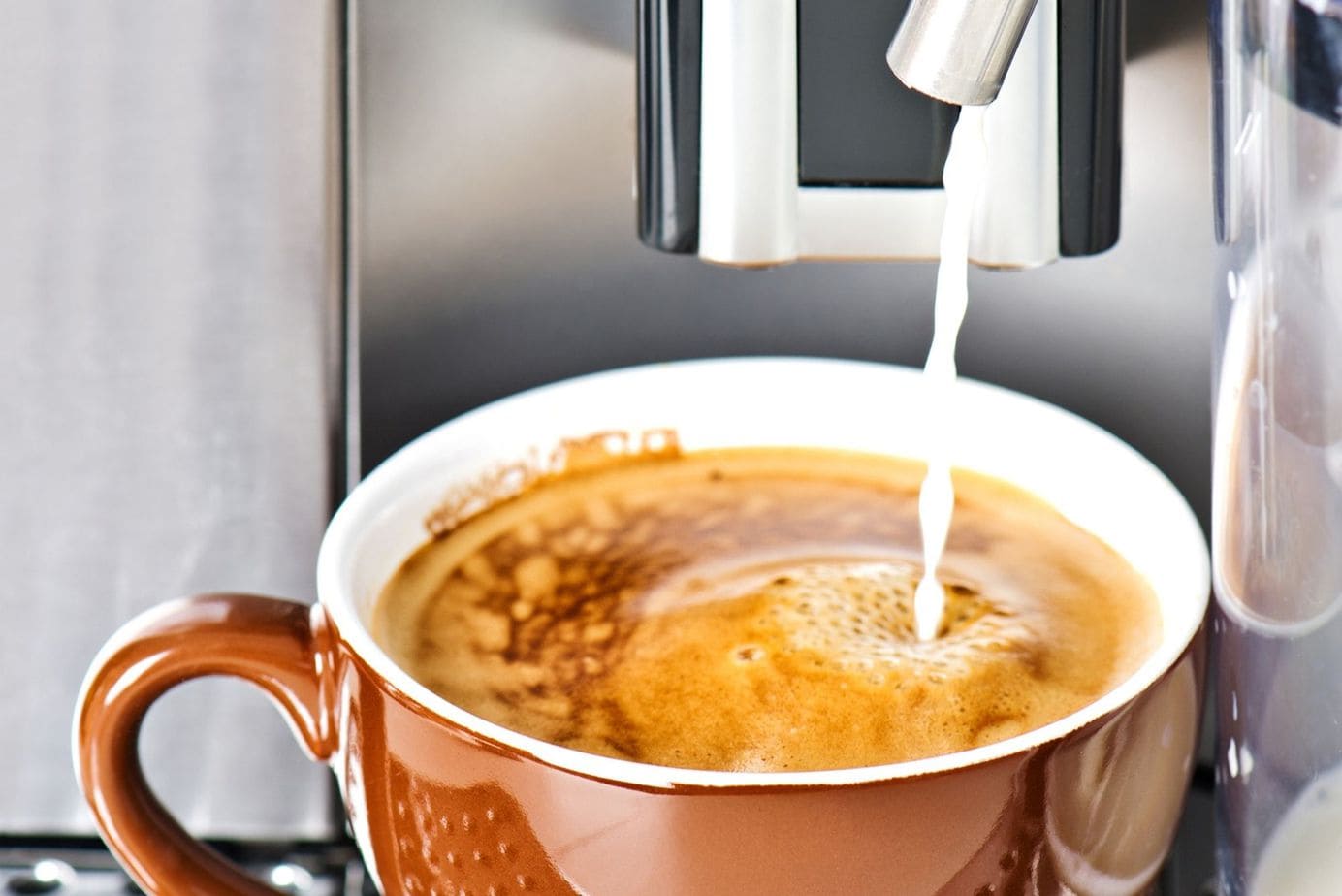
What type of coffee maker is a Keurig?
A Keurig is a single-serve coffee maker that uses pre-packaged coffee pods or “K-cups” filled with coffee grounds. It’s effectively a pod coffee machine that brews regular coffee in under a minute.
Although there are many different types of Keurig coffee makers, each machine essentially has the same features and brewing method. The machine contains a reservoir with water, a K-Cup coffee pod holder, and a cup stand or drip tray.
To make a cup of coffee, you’ll need one single-serve coffee pod — these pods are specifically designed for the machine and are only filled with enough ground coffee to make a single cup of excellent coffee.
The machine then brews the coffee by puncturing the top of the K-cup and forcing heated water through the coffee grounds. This process only takes about a minute, and you’ll have a fresh cup of your favorite coffee ready to drink in no time!
Why shouldn’t you put milk in a Keurig?
So, if you can just put a cup of water into your machine’s reservoir, surely milk would have a similar effect? Unfortunately, putting milk in a Keurig is a very bad idea.
The Keurig water tank is not designed for milk; it’s made for water ONLY. If you put anything else in there, it can clog the machine’s water lines and interior.
The Keurig K-Cup coffee maker isn’t actually designed to make milky drinks – it’s made explicitly for brewing coffee. So, when you try to make a latte or hot chocolate by putting milk in the water tank, you’re not going to get the results you’re expecting.
Secondly, milk doesn’t dissolve in hot water as well as coffee does, so when you try to make a latte or hot chocolate with milk in the Keurig, the milk will often end up splitting and floating on top of the coffee. Not very appetizing!
Lastly, putting milk in a Keurig can actually cause some damage to the machine. The milk residue can build up and clog the coffee maker’s water tank, which will then require a proper cleaning. Some people have had to throw away their nearly new coffee makers because they put milk in the water tank. So, it’s really not worth putting yourself through all of this trouble just to make a milky drink!
What happens if you put milk in a Keurig?
So, what happens if you put milk in your Keurig instead of water?
Clogged Machine
Firstly, milk is thicker than distilled water, so it doesn’t flow through the Keurig’s system as efficiently. This can cause the machine to clog up, and you might even end up having the additional cost of a visit from a maintenance specialist to fix it!
Burnt Milk
Secondly, milk can actually start to burn if it’s heated for too long. A Keurig’s internal heating coil is designed to bring water to boiling in less than a minute during the brewing process. But this level of rapid heating will overheat your milk.
So, if you put milk in your Keurig, there’s a very strong chance that the milk will start to burn. This will result in a pretty pungent, sharp odor. The drink’s taste will also be unpleasant due to the burned milk, which will give you a sour or bitter-tasting beverage.
Moldy Milk
Third, milk is a dairy product, meaning that if you do put milk in your Keurig, you’ll need to clean it out frequently with white vinegar or a descaler solution to avoid any mold or bacteria build-up. If milk is left at room temperature, it spoils quickly, and if it is kept in a warm environment like that of a Keurig water tank, it will curdle before long. This will result in a foul smell and taste and a very unpleasant coffee machine situation.
If that weren’t bad enough, it’s challenging to wash out the spoiled milk from the container. Even if your milk doesn’t get burned, the residue will spoil and curdle, leaving an unpleasantly sour odor that is difficult to remove.
Damaged Machine
Lastly, putting milk in your Keurig can severely damage the machine. The milk can build up and clog the coffee maker’s water tank. Furthermore, the scorched milk will coagulate and stick to Keurig’s heating element. It can also scorch the metal and cause it to function poorly due to the build-up. Plus, this can be very hard to clean from the internal parts of your Keurig coffee maker.
When milk dries, it often forms a hard crust. This hard milk crust might get stuck to the internal parts of your coffee maker, which will make it very hard for you to remove since you’re not technically supposed to take it apart.
And, even if you do manage to get inside the machine, scraping off this crust can easily damage the internal components. So, it’s best just to avoid putting milk in your Keurig altogether!
How can you make milky drinks without putting milk in a Keurig?
So, if you’re looking for a quick and easy way to make a latte or hot chocolate, we’re afraid to say that a Keurig simply won’t do it! However, there are a few ways around this so that you don’t have to miss out on your favorite milk-based coffee drink.
One option is to use a separate milk frother. This is an inexpensive device that you can buy from most department stores or online retailers, and it will allow you to make creamy and frothy milk without any of the problems mentioned above. All you need to do is pour some milk into a cup, place the frother in the milk, turn it on, and wait a minute or two for it to do its job!
Another option is to heat your milk in a pot on the stove. It might take a bit longer than using a Keurig, but it’s definitely worth it if you want a good latte or hot chocolate. Just heat the milk on the stove during the brewing cycle, and then pour it into your mug along with your coffee or hot chocolate mix from your K-Cup.
The third choice is to use milk or hot chocolate K-Cup pods. These are special K-Cups filled with milk or hot cocoa powder instead of coffee grounds. You can find these online or in some specialty stores, and they’re a great way to make milk-based hot coffee drinks without having to put milk into your Keurig. Just pop one of these into your machine, and you’ll have a delicious latte or hot chocolate in no time!
The final option would be to invest in a different coffee maker. There are plenty of other options. The Keurig K-Cafe machine has a built-in milk frother for foamy milk. In addition, Breville provides a detachable milk frother with many of their machines, and Nespresso makes coffee machines with built-in milk tanks that will allow you to make all sorts of delicious milk-based coffee drinks without having to put milk in your Keurig.
The bottom line…
…is that you should not put milk in a Keurig! If you want to brew single-serve coffee with practically no wait time, your Keurig machine is a godsend. But please don’t add milk to the water tank. Not only will it spoil and smell bad, but it can also damage your machine.
But, don’t worry, because there are some great ways to get around it if you really want milk in your cups of coffee or hot chocolate! And while doing so might require a bit more effort than using the coffee maker itself, it’s definitely worth it for a creamy and delicious beverage.
So, don’t be afraid to try out one of these alternate methods the next time you’re craving a homemade latte or hot chocolate, and be sure to keep all dairy away from your Keurig!
Happy Caffeinating!


